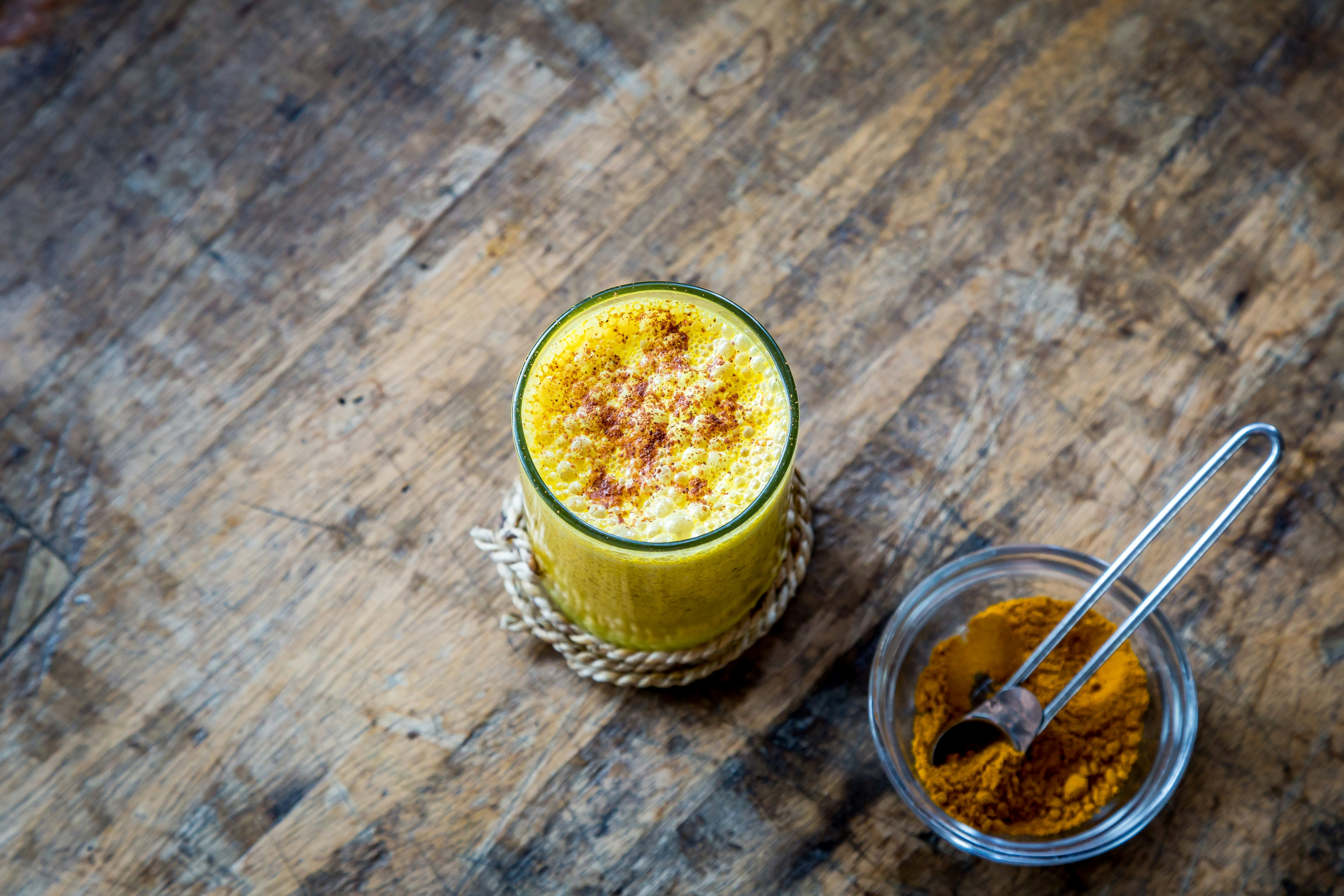
The turmeric latte — often referred to as "golden milk," or the insufferable "golden mylk" to denote that it's made without dairy — has wormed its way into cafes around the world. You can find the drink on menus from Los Angeles, to London, to Sydney, and the Guardian has crowned the turmeric latte as "2016's drink of choice."
The latte's popularity can be attributed to its main ingredient: Turmeric, a yellow root that is ground into a spice and frequently used in Indian cooking, is having a real moment. In a 2016 U.S. food trends report, Google revealed that searches for turmeric increased by a whopping 56% between November 2015 and January 2016, and fueling its popularity is its use in lattes, according to the Guardian.
The golden elixir
Possibly turmeric's greatest calling card is its purported health benefits. It's used for treating arthritis, depression, headaches, bloating and other stomach conditions, fatigue and many other ailments, according to WebMD. It's touted for its anti-inflammatory properties, and some research suggests it has the ability to fight some cancers and infections, to boot.
While the root itself has centuries-old roots in eastern medicine, big guns like Gwyneth Paltrow and Kourtney Kardashian have helped to make turmeric a mainstay in the states. More about this later.
At its most basic, the caffeine-free drink consists of warm, frothed nut milk, though some versions use dairy, turmeric root juice, chopped fresh turmeric or turmeric powder. While it has latte in name, zero coffee is involved. Melissa Sharp, the owner of Modern Baker in Oxford, England prefers to use organic turmeric powder in the drink, she said over email.
Sharp's version of the drink is made with almond milk and also features cinnamon and black pepper. "Rarely does anyone ask for it to be sweetened," she said. "If they do we sweeten it with a touch of organic honey," she said. At Café Gratitude, a popular health food chain in California, the turmeric latte is concocted with almond milk, raw honey and "the essential oil of black pepper," according to its menu.
It's common to combine turmeric milk with ginger as well: Goop's version features chopped ginger, coconut oil and coconut sugar. While the drink is typically served warm, Modern Baker and Café Gratitude also serve iced versions during warm weather seasons — something anyone can easily make at home, too.
Sharp said that her turmeric milk has quickly become the café's "top selling hot drink" since she added it to the menu in January. "[Turmeric lattes] sell all day long, whereas coffee drops away during the afternoon," she said. "That's because the turmeric mylk contains no caffeine."
Ryland Engelhart, the CIO of Café Gratitude also said the drink is one of the "top three hot drinks" at the restaurant's multiple locations. It's been on the menu since 2014. The sales, he said in an email, are "right up there with a traditional coffee latte."
A dose of cultural appropriation?
It's great that consumers are opening their minds and palates to an unfamiliar beverage, but the way the trend has taken off may just be another shining example of cultural appropriation. Following the rise of ghee, coconut oil and the distortion of Holi (looking at you, Color Run), the rise of the turmeric latte is one of the latest traditions to be lifted from South Asian culture with barely a head nod. Regardless of whether they are called turmeric lattes or golden milk, the drink has long been known as "haldi doodh" in India, which translates from Hindi to English as turmeric milk.
Turmeric, as the Guardian noted, is deeply entrenched in India's Ayurvedic medicine: "a holistic, all-natural approach to health that has been practiced for centuries in India." The combination of turmeric and milk is considered to be restorative and is often offered up as a remedy for many ailments. "The spice is believed to help with everything from cancer to a cough, and is often given to children with a fever," the Guardian wrote.
A number of people have taken to Twitter to comment how haldi doodh became "cool" once the name "turmeric latte" was attached to it.
For many years, turmeric struggled to breakout of its reputation in the West as a curry ingredient that left fingernails stained with its pungent yellow hue. Now, with its new name and presentation, as in perfectly manicured Instagrams, the drink is a hot commodity.
This phenomenon isn't specific to golden milk — the concept of a culture's creation being "hijacked" or "Columbused" happens frequently. There's nothing wrong with enjoying something delicious from another culture. The problem grows when credit isn't given where credit's due.







